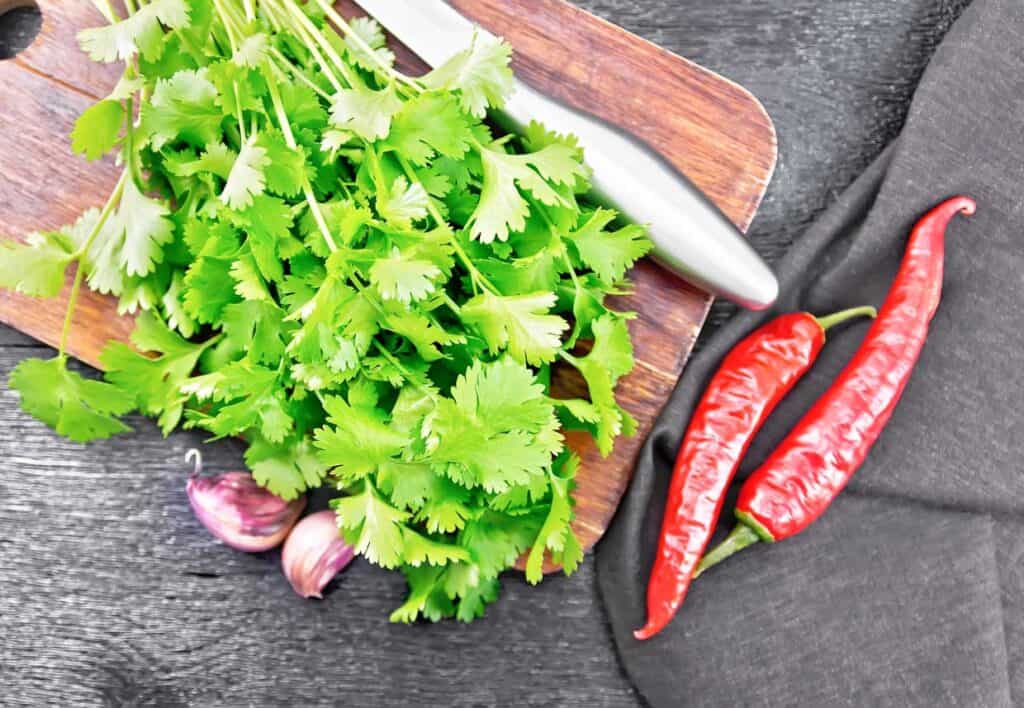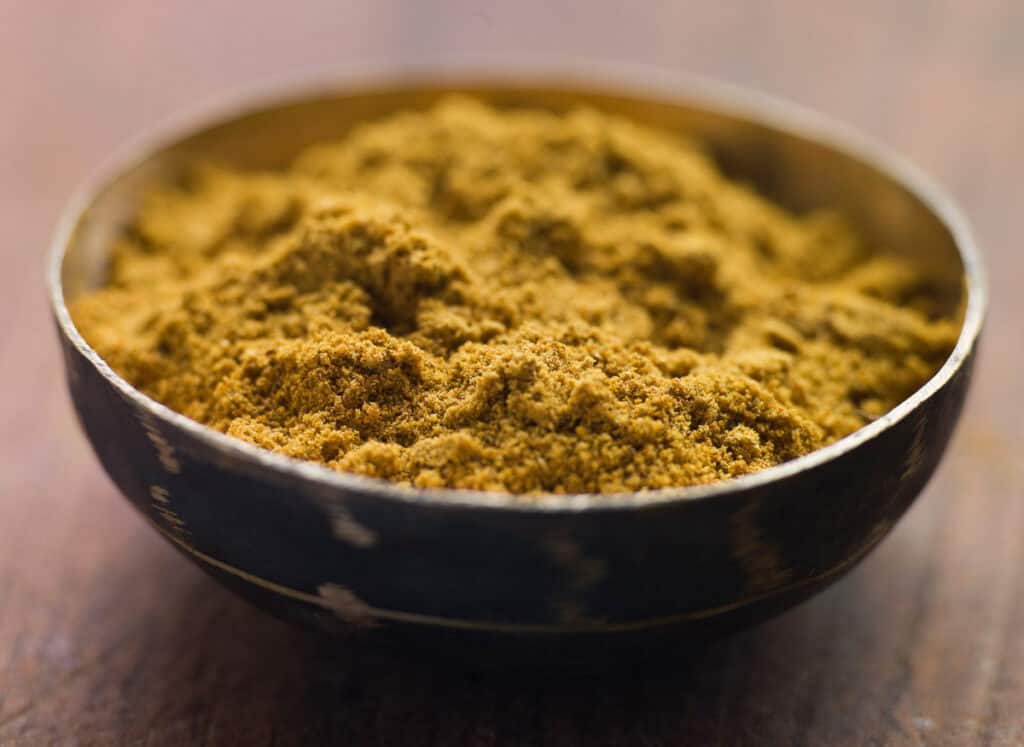Cilantro is one of those ingredients you either love or can’t stand. For some, it adds a fresh, citrusy punch to tacos, soups and curries, while others say it tastes like soap. Whether you’re out of cilantro or just can’t handle the flavor, there are some great substitutes to keep your recipes tasting amazing.

The best swap depends on what you’re making. Need that fresh, herby vibe? Parsley or mint can do the job. Looking for a little zing? Citrus zest or even celery leaves might surprise you. Whatever you’re cooking, there’s a workaround that’ll keep your dish on point.
Why you need cilantro
Cilantro serves a few purposes in cooking. Here are a few reasons why you need it:
- Cilantro adds a citrusy, earthy flavor to savory dishes.
- It is rich in vitamins, minerals and antioxidants.
- Cilantro helps balance out bold flavors and spices.
Common substitutes for cilantro
Cilantro’s distinct flavor isn’t for everyone, but don’t worry — there are plenty of alternatives to give your dish the freshness it needs. Whether you’re avoiding it for taste or dietary reasons, these substitutes will work wonders in your recipes. From parsley to basil, here’s a guide to some of the most common and flavorful options.
Thai basil
Thai basil has a slightly citrusy flavor and a strong aroma like cilantro. It can closely resemble cilantro in dishes like salsas, curries or stir-fries. If a recipe needs more citrusy flavor, add a squeeze of lime. Thai basil can be used as a 1-for-1 substitute for cilantro.
“My oldest daughter has that gene that makes anything with cilantro taste like soap. At the same time, the girl loves Thai food, in part because she lived in Thailand for a while. We always sub Thai basil for cilantro when she’s with us, and it works like a charm!”
— Sage Scott, Sage Alpha Gal
Parsley
Parsley has a more bitter, grassy taste compared to cilantro. To get a similar citrusy taste, squeeze some lemon or lime into the dish. It works best in recipes where cilantro isn’t the main flavor such as stews or soups. Parsley can be used as a 1-for-1 replacement for cilantro.
Italian parsley
Italian parsley — also known as flat parsley — has flat, serrated leaves while curly parsley has ruffled leaves. It has a milder, slightly grassy taste compared to cilantro. Italian parsley works best as a garnish or in dishes where cilantro isn’t the main flavor. Use it as a 1-for-1 substitute for cilantro.
“During my pregnancy, I discovered that cilantro just didn’t sit well with me anymore. Instead, I turned to Italian parsley as a delightful substitute in my guacamole. It brought a fresh, vibrant flavor that perfectly complemented the creamy avocado.”
— Bella Bucchiotti, xoxoBella
Mint

Mint has a similar fresh taste to cilantro, but a slightly sweeter, more pronounced flavor. Adding a small amount of parsley can help balance out the flavor. If you want to add some citrus, squeeze some fresh lime over the mint before adding it to the recipe. It works best in raw dishes like salads or salsas. You may need to use slightly less mint than you would cilantro.
Fresh dill
Dill has a distinct, strong flavor but it can work as a garnish in dishes like soups, grilled meats or salads. It is best in cold dishes like pasta salads or potato salads. Use half the amount of fresh chopped dill compared to the cilantro the recipe calls for. Add more as needed to suit your tastes.
Celery leaves
Celery leaves have a fresh, grassy taste and are slightly bitter. They are a bit rougher than cilantro, so chop them up finely. Chopped celery leaves work in salsas, stir-fries or dressings and can be used as a 1-for-1 substitute for cilantro.
Coriander seeds
Coriander is a popular spice used to replace cilantro since cilantro comes from the coriander plant. It has the citrusy notes of cilantro and a slight peppery taste. Ground coriander seeds are best used in cold dishes like dressings or marinades. One teaspoon of coriander replaces 1 tablespoon of cilantro.
Caraway seeds
Caraway seeds have an earthy, slightly anise-like flavor to them. They work best in meatloaf, stews or bread. Before using, grind them into a fine powder. Due to their potent taste, use a quarter the amount of ground caraway seeds compared to the cilantro the recipe calls for.
Cumin

Cumin is more nutty and slightly spicy compared to cilantro. It works best in chili, guacamole and tacos. It is very potent, so use 1 teaspoon of cumin for every tablespoon of cilantro the recipe calls for.
Dried parsley
Parsley has a more bitter taste than cilantro, but it will give your dish a fresh herb flavor. Add a squeeze of lemon or lime juice to make the flavor closer to cilantro. It can be added to cooked dishes like sauces, marinades or salsas. Use 1 teaspoon of dried parsley for every tablespoon of fresh cilantro the recipe calls for.
Curry powder
Curry powder contains several spices, including coriander, cumin and turmeric. It works best in curries, marinades and soups where a deeper, spicier flavor is needed. Add it early in the cooking process so the flavors can meld. Use it sparingly as it can easily overpower a dish. Use one-quarter the amount of curry powder compared to the amount of fresh cilantro the recipe calls for.
Dried dill
Dried dill has a stronger, slightly citrusy flavor compared to cilantro. It doesn’t taste like cilantro but can work in dishes where you want to play around with flavors. Dried dill works best in recipes that aren’t cooked like dressings, dips and cold sauces. Use one-third the amount of dried dill compared to the amount of fresh cilantro the recipe calls for.
Final thoughts
Whether you’re team cilantro or can’t stand the stuff, there are plenty of swaps to keep your dishes tasting fresh and flavorful. Just pick the substitute that works best for what you’re making, and you’re good to go. With so many options, you won’t even miss the cilantro.
Heidi is a Certified Elementary School Teacher in the Inland Northwest and has been teaching for 18 years. She is also a vintage recipe blogger at Real Life of Lulu, where she focuses on recipes that are at least 50 years old, many from her grandparents’ kitchens. When she isn’t teaching or baking, she loves spending time with her husband and three kids.